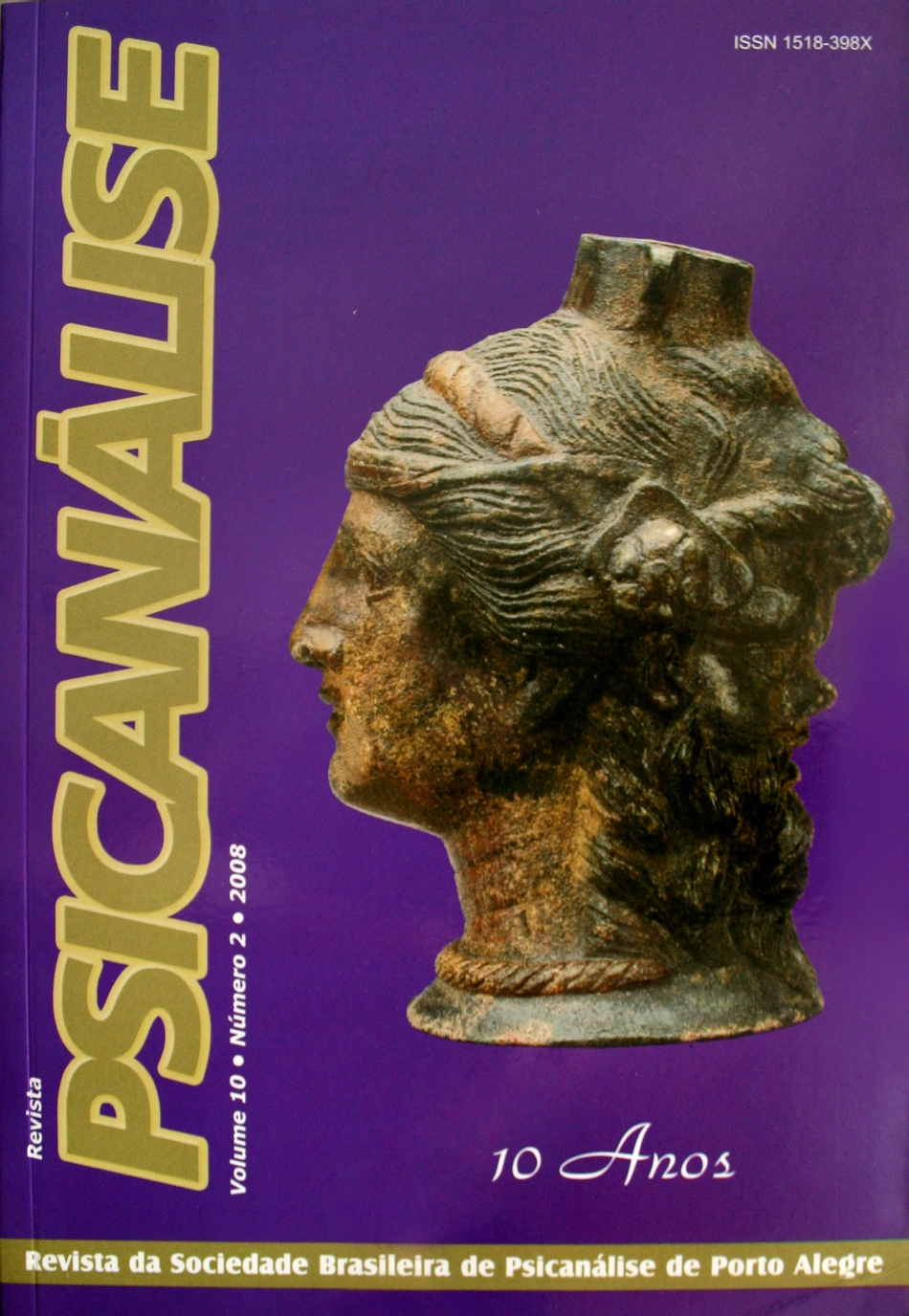The psychoanalyst and the art of practicing
the nature of the link
DOI:
https://doi.org/10.60106/rsbppa.v10i2.291Keywords:
Intersubjectivity, Link, Transference, Contratransference, TherapeutistAbstract
Through a clinical case, the author examines the relation between the nature of the link and the art of practicing. He regards the therapeutic link as an essential condition in the development of the treatment. He believes that the art of practicing would have its origin on the therapist’s ability in finding a way of having a link with his patient, so that the treatment gets satisfactory results. The author points out that to achieve these objectives, many times it is necessary to sacrifice the method he was previously proposed to follow. Next, he examines the main changes in the psychoanalytical models, which modified many analysts’ activities of late years. He calls attention mainly to the transition of Freud’s determinist method into the Melanie Klein’s method. This method is to be descriptive, but becomes an explaining method. Afterwards he calls attention to the narrative model developed by Spence and Schafer, which among other characteristics emphasizes the changes in the therapist’s activity when facing the patient’s narratives. Among them, they privilege the relation of the transferential “here and now” upon the historical past and in this way they come closer to the kleinian model. However, the fact of preconizing that the analyst’s activity should happen from the position of unknowing brings them closer to Bion's analytical model, where there is nothing to explain and a lot to describe about the psychic reality. According to Bion, the describing interpretation invites to thinking in common, so that patient and therapist may progress in the sense of searching for new questions and narratives that are going to extend the psychic reality perception field. To conclude, the author tries to present his interpretation in what consists the art of practicing. In his opinion, the art lays in the analyst’s ability in establishing simultaneous dialogs with multiple and contradictory narratives, without invalidating any of them, having the aim of always finding a new question that gives opportunities to other inquiries. These considerations are illustrated in the development of the clinical case presented.
Downloads
References
BARANGER, M.; BARANGER, W. La Situación Analítica como Campo Dinámico. In: BARANGER, M.; BARANGER, W. Problemas del Campo Psicoanalítico. Buenos Aires: Kargieman Editores. 1993.
BICK, E. The Experience of the Skin in Early Object-relation. International Journal of Psychoanalysis, v. 49, p. 484-486, 1968.
BION, W. R. Apriendendo de la Experiencia. Barcelona: Paidós, 1997.
BION, W. R. Uma Teoria sobre o Pensar. In: Bion, W. R. Estudos Psicanalíticos Revisados. Rio de Janeiro: Imago, 1987, Cap. IX, p. 107-126.
CAPER, R. A Mind of Ones’s Own. London: Routledge, 1999.
CHUSTER, A. Bion Cria de Fato uma Nova Psicanálise? Revista de Psicanálise, v. 5, n. 3, p. 311-337, 1998.
FERRO, A. A Técnica da Psicanálise Infantil. Rio de Janeiro: Imago,1995.
FERRO, A. Técnica e Criatividade – O trabalho psicanalítico. Rio de Janeiro: Imago, 2008.
FREUD, S. (1912). A Dinâmica da Transferência. In: FREUD, S. Obras Completas de Sigmund Freud. Ed. Standard Brasileira. Rio de Janeiro: Imago, 1996. v. 12.
FREUD, S. (1937). Construções em Análise. In: FREUD, S. Obras Completas de Sigmund Freud. Ed. Standard Brasileira. Rio de Janeiro: Imago, 1996. v. 23.
KATZ. G. A Segunda Pele do Paciente: uma viscissitude da psicanálise. Arquivos de Psiquiatria, Psicoterapia e Psicanálise, v. 2, n. 1, p. 23-28,1995.
KATZ. G. Trabalhando com a Intersubjetividade. Psicanálise: Revista da SBPdePA, v. 10, n. 1, p. 85-109, 2008.
MODELL, A. H. El Psicoanálisis en un Contexto Nuevo. Buenos Aires: Amorrotu, 1988.
OGDEN, T. Subjects of Analysis. London: Jason Aronson, 1994.
RODULFO, R. O Brincar e o Significante: um estudo psicanalítico sobre a constituição
precoce. Porto Alegre: Artes Médicas, 1990.
SCHAFER, R. A New Language for Psychoanalysis. New Haven: Yale University Press, 1976.
SCHAFER, R. Language and Insight. New Haven: Yale University Press, 1978.
SPENCE, D. Clinical Interpretation: some comments on the nature of the evidence. In: SHAPIRO, T. (ed.). Psychoanalysis and Contemporary Science. New York: Internacional University Press, 1976. v. V.
SPENCE, D. Narrative Truth and Historical Truth: meanings and interpretations in psychoanalysis. New York: Norton, 1982.
SPENCE, D. Though and Tender Minded Hermeneutics. In: MESSER, S.B.; SASS, L. A.; WOOLFOLK, R. L. (eds.). Hermeneutics and Psychological Theory: perspectives, psychoterapy and psychopatology. New Bruswick: Rutgers University Press, 1987.
SPENCE, D.; LUBORSKY, L. Quantitative Research on Psychoanalytic Therapy. In: BERGIN, A. E.; GARFIELD, S. L. (eds.). Handbook of Psychotherapy and Behavior Change: an empirical analysis. New York: Wiley, 1978.
WINNICOTT, D.W. Objetos Transicionais e Fenômenos Transicionais. In: WINNICOTT, D.W. O Brincar e a Realidade. Rio de Janeiro: Imago, 1975. p. 13-44.
Downloads
Published
How to Cite
Issue
Section
License
I attribute the copyrights that belong to me, on this work, to SBPdePA, which may use and publish it by the means it deems appropriate, including on the Internet or in any other computer processing.
















